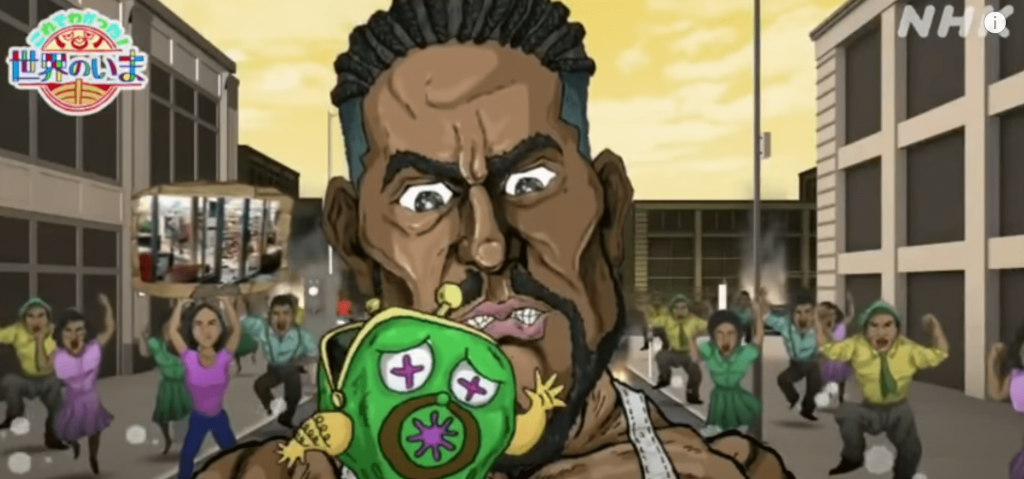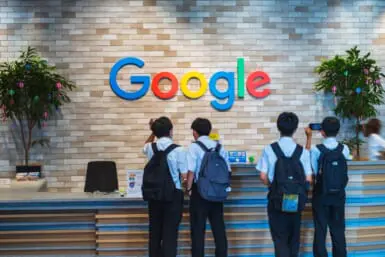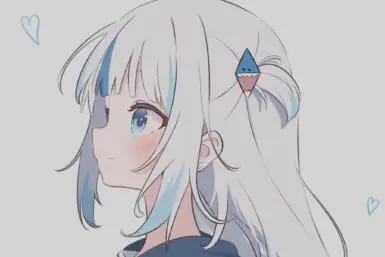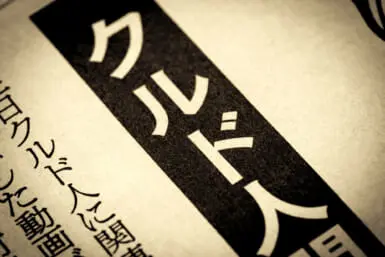Japanese television has an uncomfortable tendency to produce embarrassing (read, racist) videos and programs when discussing topics related to non-Japanese people or affairs. In 2018, Japanese comedian Masatoshi Hamada appeared on a New Year’s Eve show in a Beverly Hills Cop skit with his face blacked up. In 2015, a picture of members of the group Rats & Star and idol group Momoiro Clover Z wearing blackface backstage during the filming of Fuji TV’s famous “Music Fair” show triggered outrage. The list goes on. And just as you think producers have finally learned their lesson, another absurdity emerges. This time, we’re talking about NHK, Japan’s public broadcaster, which is funded through TV receiving fees, which we are all required to pay under the The Broadcast Law of Japan. This week, NHK broadcasted a video that “educates” Japanese children about the Black Lives Matter movement and it didn’t go well.
What happened
Last Sunday, on June 8, NHK broadcasted a 1.20-minute-long animated clip during its weekly Sunday evening program “Kore de wakatta! Sekai no Ima,” (Now I Understand! The World Now!), which aims to explain complex world events in an easy way so that even children (who are the prime audience) can understand. The program’s mission, as stated on the NHK official website, is to “point out the problem and the important takeaway.” It further reads:
“Do you sometimes feel like you’d notice that there’s something wrong going on but you’d give up thinking about international news because they are taking place overseas? You should know, however, that international news has a great impact on Japan’s economy and politics, and sometimes even our personal lives. This news also helps us remind ourselves of important things happening around us in Japan.” There is no doubt that NHK has good intentions to deliver high-quality content. And they should be praised for picking up the issue rather than ignoring it as many other Japanese TV channels would choose to aside from straight news coverage. However, the way this video was delivered was wrong on too many levels.
“The video also has no mention of what it means to live in a country where African American people fear for their lives on a daily basis.”
The animated video featured black men and women standing on a very dark street with their fists raised. One of them, an African-American muscle man wearing a white tank top, speaks for the crowd in a bid to explain why they are all so angry and what the cause of the protests currently taking place across the country is. He is holding an empty purse and yells at a fully clothed white man. The man says (or more accurately, shouts) that black people are angry, because of the significant wealth gap between black and white Americans. “Yeah, white people have seven times the average assets of black people,” he says.
The narrative then switches to the coronavirus outbreak and the muscular man explains that there is a disproportionate toll the virus was taking on the African-American community in the US. “And after all that, now comes the coronavirus pandemic, which affected us black people the most. Hey you, here’s a question: Do you know how many black people lost their jobs or got their hours cut?” A cute and tiny Statue of Liberty looks at a book for answers but clearly has none as s/he only replies, “Hmmm…”
“Forty-five percent!” the now red-faced black man — while pumping his fist, screams almost violently to the tiny statue. You get the picture.
The video was part of a much longer program, during which 26 minutes were dedicated to discussing the core reasons for the outbreak of the protests, including the murder of George Floyd. But this still doesn’t blur the impact of the fact that NHK chose to upload solely the controversial video on the program’s official Twitter account. Or that it made it in the first place.
Why it’s so wrong
The first criticism that needs to be addressed is the selective information presented in the video. The clip has no mention of the police brutality that is regularly taking place in the United States. It has no mention of the murder of George Floyd who died on May 25 under the knee of a caucasian policeman while begging for the man to move and allow him to breathe. The video has no mention of the murders of Breonna Taylor, Eric Garner, Oscar Grant, Atatiana Jefferson, Trayvon Martin and the many other African-American men, women and children who have lost their lives to law enforcement and have received no justice for their murders. The video also has no mention of what it means to live in a country where African American people fear for their lives every single day.
The second problem is the Pandora’s Box of stereotypes in this short clip. The voice used in the narrative — the voice of the black man speaking — is one typically used for ruffians in Japanese animation. It sounds scary and violent. It’s loud and provocative. The depiction of the people in the clip is similar — the man looks and acts scary, he is puffed up, his eyes speak of danger and his over-exaggerated muscles tell you that he is a threat to you. In other words, this very short clip gives an image to its audience (remember that kids are watching this!) that black men and women are angry, loud, scary and always ready to confront others. The white man in the video, on the other hand, looks like he has no clue why they are being shouted at. Wrong.
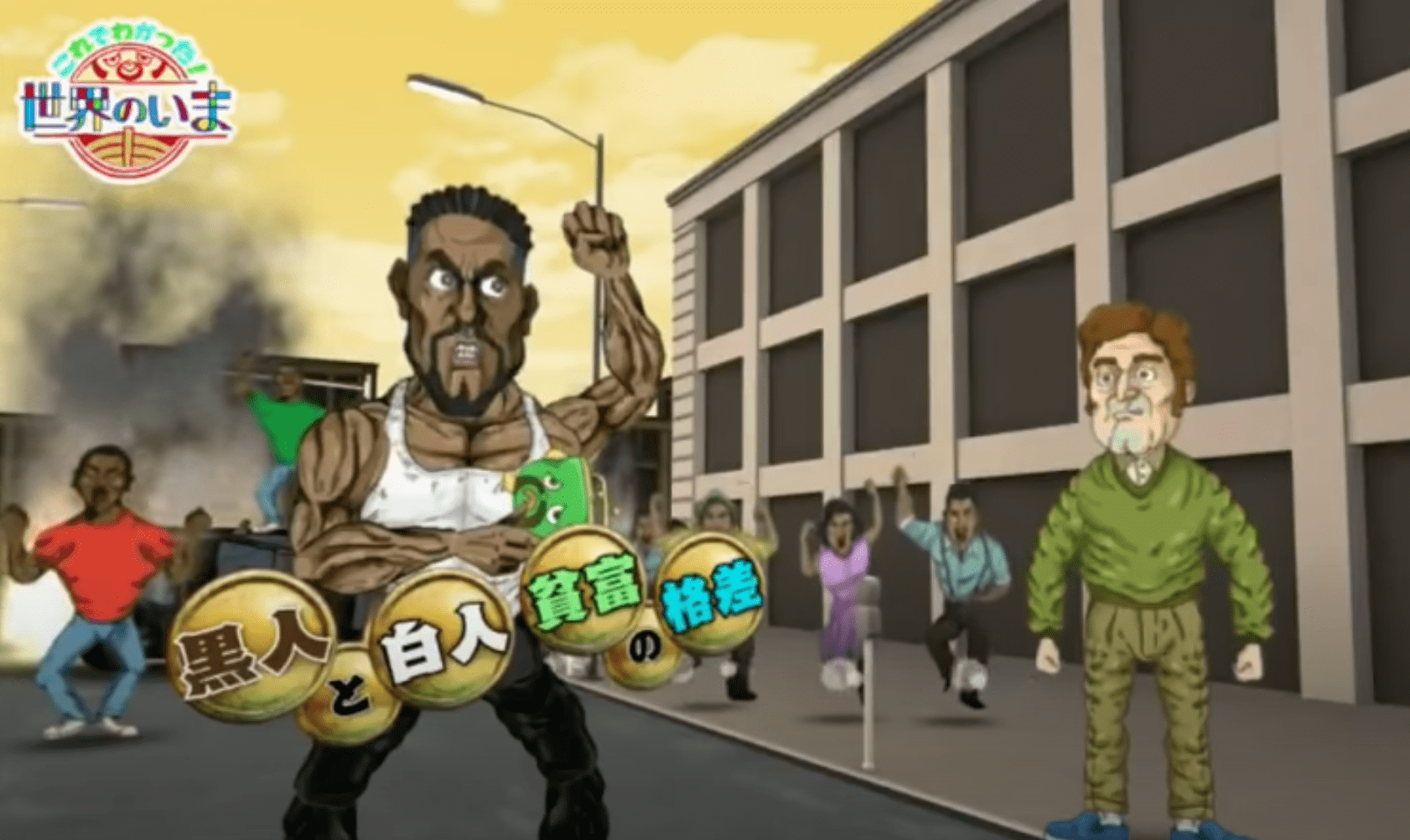
Last but not least, the video sends the wrong message that this is a problem unique to the United States now, and even more so to its African American community. By doing so, it fails to address its own raison d’etre — wasn’t the program’s purpose to remind us how world events are connected to issues happening in Japan? Wouldn’t it have been more appropriate to also point out that the exact same racism happens here in Japan as well? All that the video sadly achieved is to create more anger, stereotypes, frustration — and injustice, a vicious cycle that creates and feeds racism across the globe.
What people had to say
Social media erupted as soon as the video was shared on NHK’s official Twitter account with criticism flooding in both from within Japan and overseas. High-profile officials, including Joseph M Young, the chargé d’affaires ad interim at the US embassy in Tokyo, the Japan-based writer Baye McNeil and even tennis player Naomi Osaka couldn’t hold back from openly criticizing the video as “offensive and insensitive.” The following are just some examples of what people had to say.
I’m sorry we do not accept your lame excuses anymore. You claim ignorance about blackness and YET you feel empowered to make offensive racist commentary on black issues / #BLM without consulting anyone! If you need help we are here but THIS BS is #UNACCEPTABLE @nhk_sekaima pic.twitter.com/Y43IKcV953
— Baye McNeil (@BayeMcneil) June 8, 2020
While we understand @NHK‘s intent to address complex racial issues in the United States, it’s unfortunate that more thought and care didn’t go into this video. The caricatures used are offensive and insensitive.
— ジョセフ・M・ヤング 駐日米国臨時代理大使 (@USAmbJapan) June 9, 2020
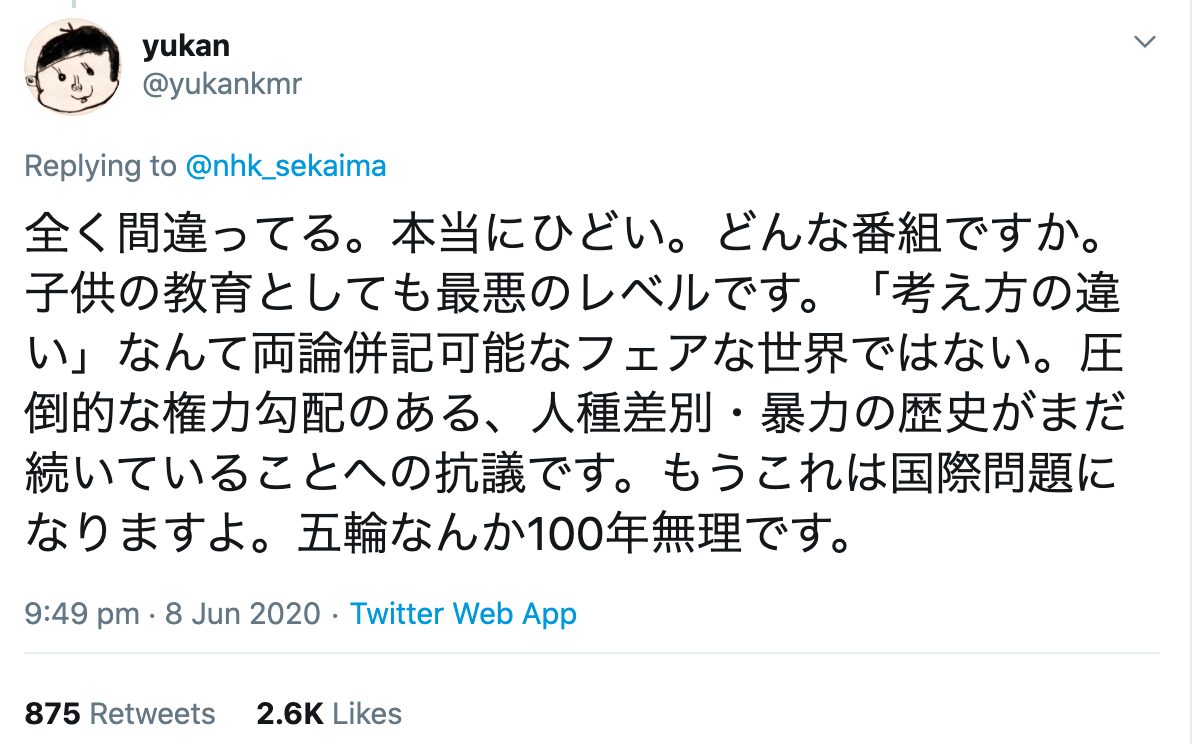
Translation: This is entirely wrong. Terrible. What kind of program is this? This is a horrible level for an education program for children. This is not a “let’s agree to disagree” sort of discussion. This is a protest against the continuation of historical and systematic racism and violence. This will become an international problem. Japan still has 100 years [before they can host] the Olympics.
https://t.co/7xF9JM37gY pic.twitter.com/sHaSgDIrkc
— NaomiOsaka大坂なおみ (@naomiosaka) June 8, 2020
What did NHK say?
In response to the ongoing criticism, NHK deleted the video from its social media account on Tuesday, two days after its release, and issued an official statement in both Japanese and English.
We at NHK would like to sincerely apologize for a computer animation clip posted on our Twitter account. Our statement:https://t.co/UbPffgpH0Z
— 世界のいま Mr.シップ (@nhk_sekaima) June 9, 2020
The full text, uploaded on the program’s website, is as follows:
“We at NHK would like to sincerely apologize for a computer animation clip posted on our Twitter account. The clip was part of a segment in the program “Kore-de-wakatta Sekai-no-ima” broadcast on Sunday, June 7th. The 26-minute segment reported that the protests in the US were triggered by the death of George Floyd after he was pinned to the ground by a white police officer. It also reported the background on how many people are angered by the case, handling of the matter by the Trump administration and criticism against it, as well as division in American society. The one-minute-21-second clip aimed to show the hardships, such as economic disparity, that many African Americans in the US suffer. However, we have decided to take the clip offline after receiving criticism from viewers that it did not correctly express the realities of the problem. We regret lacking proper consideration in carrying the clip, and apologize to everyone who was offended.”
To many, however, this apology sounded like nothing but an excuse. And certainly not a sufficient one.
ちょっと極めて肝要な部分が英訳から漏れているんだけど??
Why is this part missing from the ENG version?
“Drawing from the criticism and feedback received, we will strive to take utmost consideration & respect fundamental human rights during each step of the production process” pic.twitter.com/5gXiXru9oO
— マキシミリアン (103/300) (@maximillianaire) June 9, 2020
しかも「アメリカの黒人の人たち」……せめて「アフリカ系の方々」と書けばいいのに。お詫びの文書でこれか。。#NHK #せかいま pic.twitter.com/pbNRD2K9Qw
— しごしか (@shigoshika) June 9, 2020
Not a sincere apology. The PDF is not even signed. At least say “African American people” rather than “America’s black people.” Is this really an apology…
典型的な、なんで謝ってるのかわかってないパターン。不快だから、配慮が欠けてた、という気持ちの問題じゃない。間違ったイメージを植え付けることに加担する表現方法を取ったこと、問題の核心ではない部分を本質であるかのようにまとめたのが問題。まじでWAKE UP!!!! https://t.co/sHk55YwARI
— Kelpie (@phunkykelpie) June 9, 2020
A typical apology issued by someone who doesn’t know why they are apologizing. This isn’t a problem about “lack of consideration” or “causing someone discomfort.” The problem lies in the fact that this video helps portray a wrong image and the fact that it presented issues that aren’t at the core of the problem as if they were the very cause of it (the movement). Seriously, WAKE UP!!!!
As long as Japan continues to treat racism as an “overseas issue” and create stereotypes at the expense of other people for the sake of “simplifying” complex issues, its population will remain with their necks buried in the sand. And this is worse than being silent when the whole world is raging. For a reason.
If you have a story you want to share with us and our readers, please reach out to us at editor@tokyoweekender.com or leave us a comment below.

